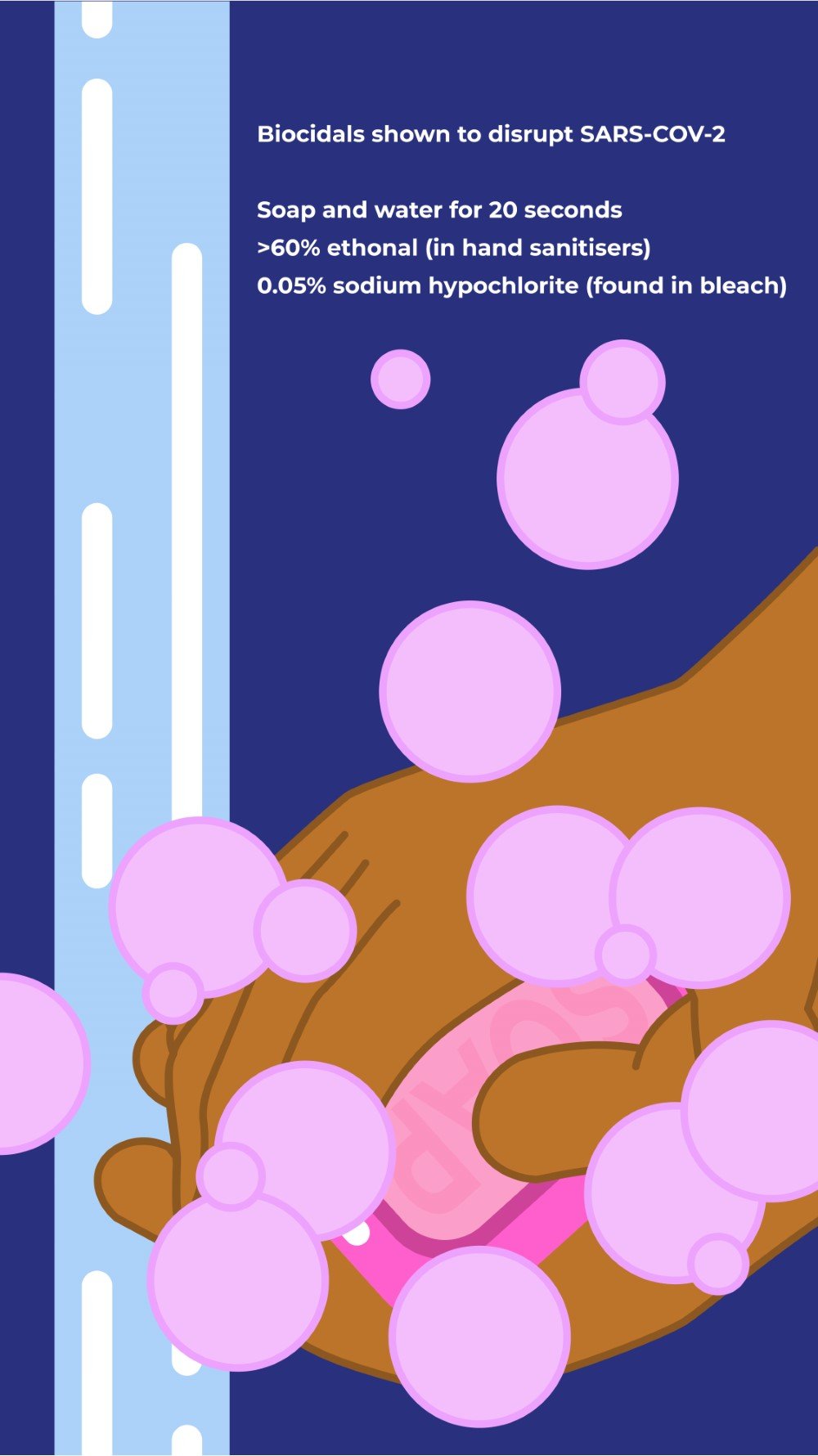Covid-19 Visualisation

During these inexplicably confusing and trying times, design studio Tiipoi found themselves curious about how the Covid-19 was spreading so fast. They also found a lot of incorrect information out there.
So the studio developed a set of informational story screens about the virus and how it proliferates for dissemination on Instagram and other social media platforms. All the information was provided by Dr. Sahana Gopal, PhD who has experience in biomedical research and the team worked hard to keep the information accessible and correct.
The graphics were done by intern, Saffron Sibthorp, who is a recent ex GMD student, and the art direction was done by the Tiipoi team – including GMD alumna, Jaya Modi.
Follow Tiipoi on Instagram for more Covid-19 graphics: @tiipoi
The virus that causes the disease COVID19 called SARS-COV-2, as it is from the same family of coronaviruses that caused the SARS and MERS outbreaks. It is often referred to as the coronavirus that causes COVID19 (COrona-VIrus-Disease-19). Coronaviruses primarily cause respiratory tract infections, of varying severity.
Viruses are interesting ‘creatures’ – that’s if you consider them living. They can’t replicate on their own and need to enter a host cell and hijack its replication machinery to produce more ‘virions’. The virion is a complete structure of the virus – a lipid bilayer with proteins anchored on its surface, and genetic material or the ‘code’ within.
In the case of SARS-COV-2, the spike protein that is present on the surface of the virus is a particularly important feature as it is responsible for binding to human cell receptors and subsequent entry into human cells. Once the virus enters the human cell it can use the human cell machinery to replicate itself into millions of virions much like a little factory.
In terms of size, it is about 50-200nm in diameter, which is about 1 millionth of a metre, 500x smaller than an average human cell or 100x smaller than a bacterium. (Chen et al 2020, Lancet)
The power of soap: we keep hearing that soap is the best way to go in terms of ‘killing’ the virus but how does this happen?
To ‘kill’ the virus we need to take apart what is holding it together. Soap is an amphiphile. This means that it has both water-loving and water-hating parts to its composition. The virus has a lipid layer surrounding it (water-hating). Soap can integrate in the lipid layer through its water hating side, but in doing so it also brings water close to it through its water-loving side. This tears the structure of the virus apart and can be thought of much like breaking up oil droplets in water.
Besides soap, solutions with large concentrations of alcohol (>60%) and household bleach can inactivate the virus, and so can temperatures of greater than 56 degrees C, for around 60 minutes.
We also know that SARS-COV-2 can remain intact on surfaces for up to 3 days, so its a good idea to disinfect specific types of surfaces more than others.
